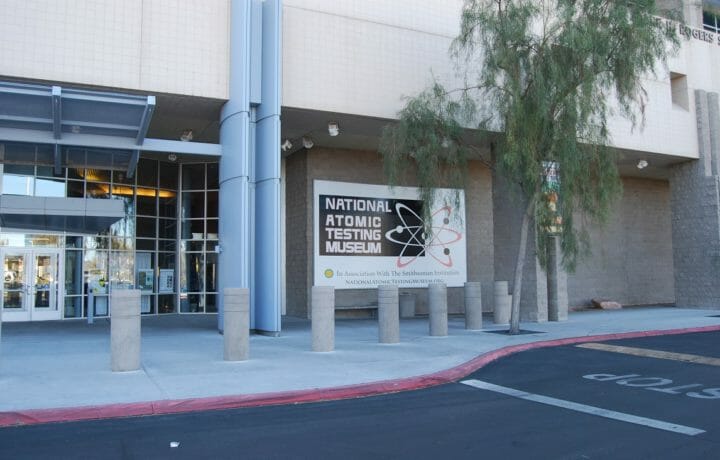Las Vegas is known today for its hedonistic offerings including casinos, night clubs and other “adult” offerings. But in the shadows of the infamous Las Vegas Strip, visitors to Sin City can explore another side of the city in the desert. The National Atomic Testing Museum documents the history of nuclear testing at the Nevada Test Site (NTS) in the desert north of Las Vegas. As a history museum, it is the only one of its kind that offers the history of atomic testing beginning in World War II and exploring the reasons why America pursued the atomic bomb.
This museum first opened in March 2005 as the “Atomic Testing Museum,” and it is operated by the Nevada Test Site Historical Foundation as a 501(c)(3) non-profit organization. It has been affiliated with Smithsonian Institution since December 31, 2011 when President Barack Obama signed a military spending bill that designated it as a national museum. Today it is one of just 37 national museums in the United States, and the only one dedicated to the study of atomic testing.
Go Nuclear: From the Nevada Test Site to Ground Zero Theater
Visitors to the museum can take in the history of the nuclear program during the Cold War. It is a repository for one of the most comprehensive collections of nuclear history and as part of its mission, the National Atomic Testing Museum continues to seek to collect and preserve a wide variety of materials and artifacts relating to atomic testing, the Nevada Test Site, the Cold War, and nuclear and radiological science and technology. The current collection includes thousands of rare photographs, videos, artifacts, scientific and nuclear reports and data and one-of-a kind scientific collections.
The museum is largely focused on the period from the first test at NTS on January 27, 1951 to the present. Among the exhibits is a short presentation in the “Ground Zero Theater,” which simulates the experience of observing an atmospheric nuclear test.
Exhibits include vintage Geiger counters, radio badges and other radiation testing devices, but the National Atomic Testing Museum also features exhibits relating to Native American artifacts that were from the test area showing its own unique history as well as pop culture memorabilia related to the atomic age. The collection now includes more than 3,500 artifacts that span more than 65 years, as well as more than 16,000 official government and unofficial personal photos that document the 70 years of atomic history.
The museum is divided into several key galleries that include a focus on atmospheric testing and underground testing, as well as those that highlight the role of the workers at the NTS. The museum even features a section of the Berlin Wall, a symbol that serves to mark the end of the Cold War and the hope to end atomic testing. In 2012 the museum added a small exhibit on Area 51, which has been expanded in subsequent years.
Outside of the museum is a weather station that records weather data for downtown Las Vegas. The data includes temperature, wind speed and notably background gamma radiation in microroentgens per hour.
The National Atomic Testing Museum is located at 755 East Flamingo Road, Las Vegas Nevada. It is open Monday to Saturday from 10am to 5pm, and Sunday from 12pm to 5pm.




